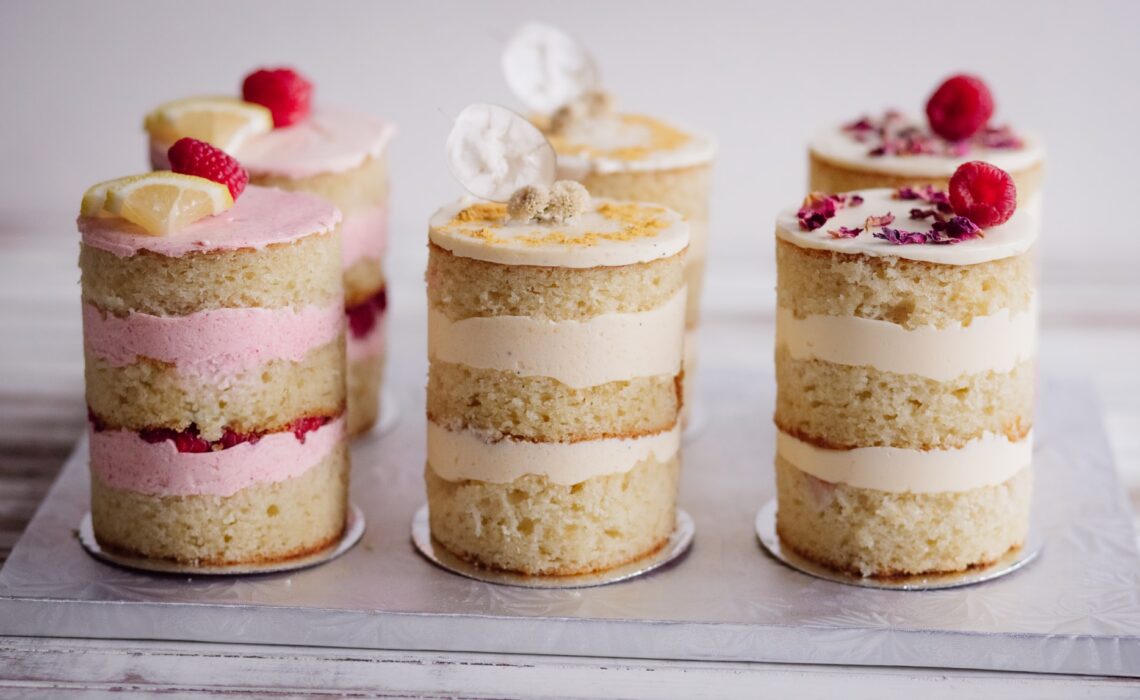
Every day, you probably experience something new in your life that didn’t exist before the COVID-19 pandemic. This is especially true for engaged couples and newlyweds. Instead of large engagement parties, many couples hosted virtual celebrations or skipped it altogether. Visiting venues was tricky and cake tastings grew more complicated. But both humans and the event industry have an astonishing ability to adapt. One notable change in the event industry—especially with weddings—is the popularity of individual desserts and single-serve cakes.
With COVID-19, distance is paramount for avoiding infection. For events, this doesn’t just mean separated tables and chairs. It also means avoiding buffet-style food and drink stations and keeping everybody seated as much as possible. That’s where individual food comes in, like single-serve cakes. Bringing food to the guests is a safer option—it keeps the guests seated and avoids crowded areas and potentially contaminated food. Instead, a few select servers deliver the mini treats to each guest.
Single-serve cakes (and single-serve food in general) are especially popular at small, intimate gatherings—which are also a new COVID-19 trend. Creating and delivering individual cakes to 100 guests would be time consuming and expensive. But to 30 guests? That’s a piece of cake! Let’s explore single-serve cakes a little more, including the pros and cons of serving them at your special day.
What Are Single-Serve Cakes?
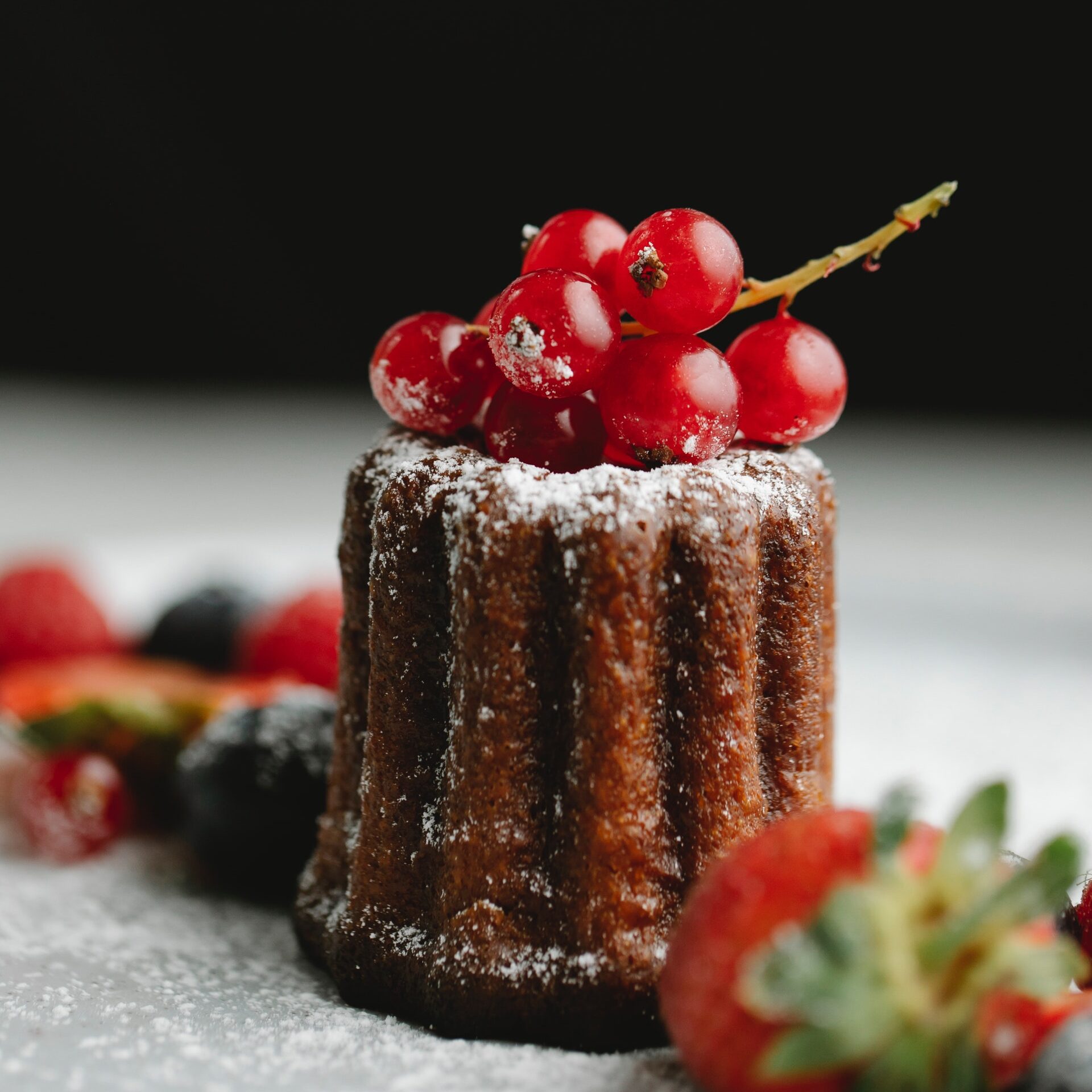
Single-serve cakes are individual, miniature cakes for each guest. Instead of receiving a slice of a bigger cake, guests receive their own tiny cake after the meal. But don’t worry—they still get the same amount of cake! Each miniature cake is about the same amount of cake as a slice. It’s just wrapped up in a nicer package.
These mini cakes are convenient and cute, and you won’t have to skimp on tradition, either. You can each have your own single-serve treat, or you can purchase a one- or two-tier cake for tradition’s sake: to cut at the reception and to save for their one-year anniversary. Of course, you can still cut a single-serve cake and even freeze a few for next year.
Pro: Doubles as decorations
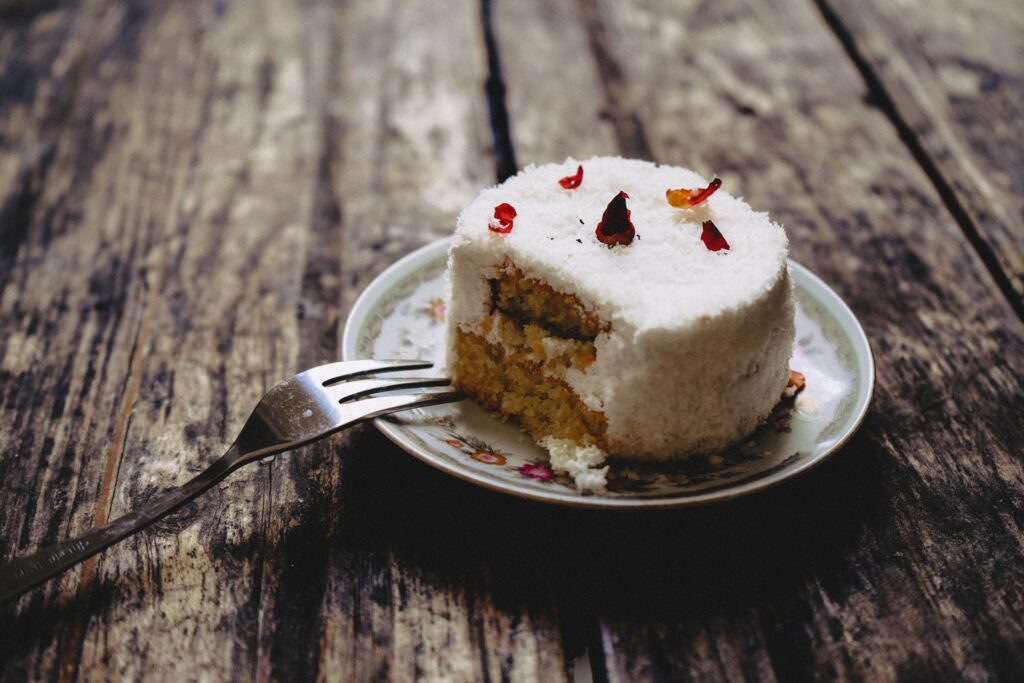
Single-serve cakes have the same beautiful exterior as a standard-sized cake. And much like a traditional wedding cake is a statement piece of the reception, mini cakes can be used to reinforce your wedding theme, too. For example, the cake table at your modern barn wedding may have single-serve cakes in lanterns. Or you can display them on wooden crate shelves at your rustic wedding. You can even put each cake in a serving dish or container that matches your theme. Now you have an entire table of decorations for your ceremony—even once they’re served to guests.
Con: Takes up more space
However, all those little cakes can take up a lot of space, especially if you’re hosting a large wedding. You may not have room for a whole table’s worth of dessert and decoration. Typically, a traditional wedding cake still gets its own table, but it’s small and doesn’t take up much space. Plus, you’ll need to consider any decorations that you want to add to the space. Of course, for a small wedding, this may not be an issue. But consider your venue size before choosing individual desserts for everyone.
Pro: Delightfully adorable
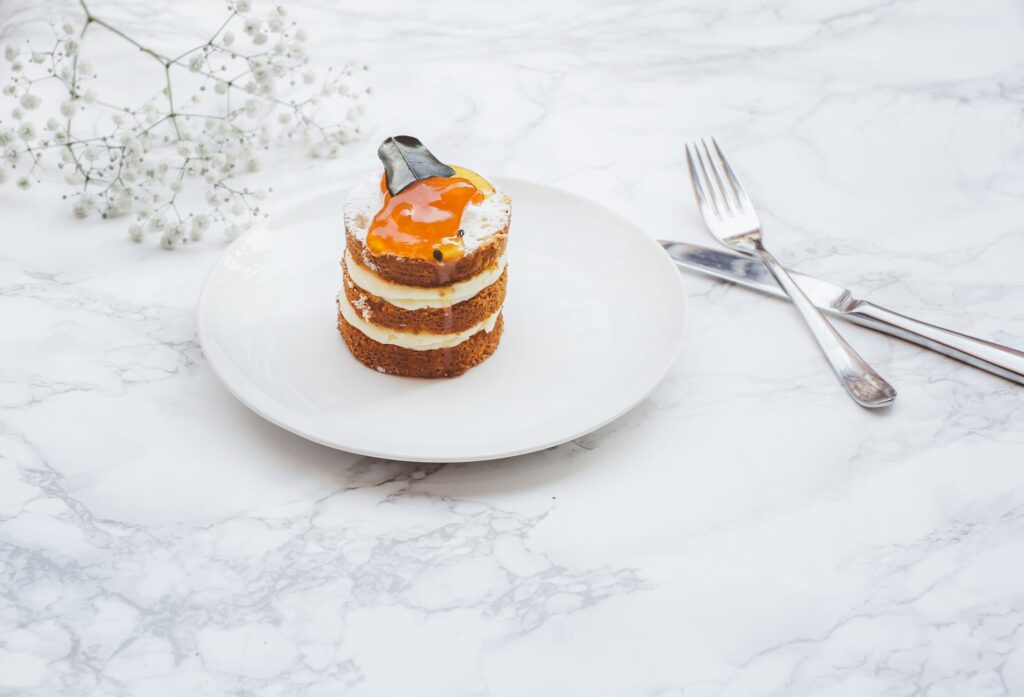
Everybody knows that mini versions are always cuter, and these tiny cakes are no exception. Plus, each cake is fully decorated the same way a traditional wedding cake would be. It’s just small! So guests will receive their own personal wedding cake as a dessert. That combination of cuteness and style will put a smile on every guest’s face. (Without compromising the elegance of your special day, we promise!)
Con: Can cost more than other desserts
Of course, cute things aren’t always cheaper. Depending on how many single-serve cakes you need, it may take longer to make and decorate individual cakes, compared to one large one. And it may take more ingredients, too. For example, it may take more fondant to cover 50 small mini cakes than one tiered cake. Or more frosting to put flowers on each cake instead of just one.
Just like you’d check the venue for space before choosing a single-serve dessert, check with your baker, too. Discuss the price with your baker beforehand. See if they have a minimum—or maximum—requirement as well.
Conclusion
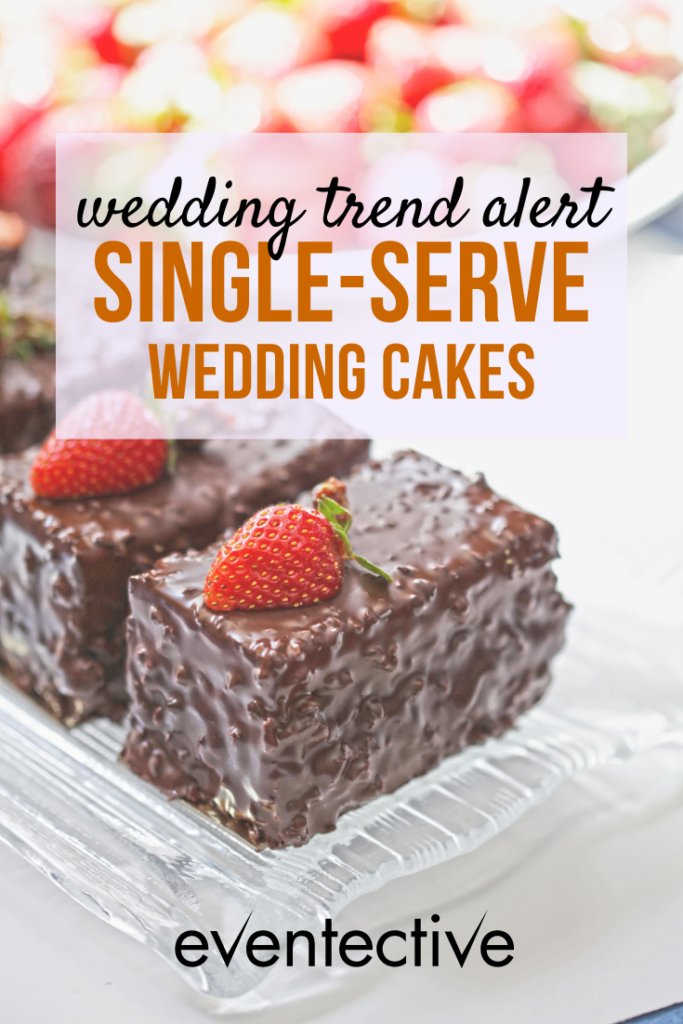
Single-serve cakes are a unique way to serve dessert at your big day. Instead of single slices, guests receive a miniature wedding cake all to themselves. And while these adorable desserts can act as decorations until it’s time to taste them, they may also cost more than a traditional tiered wedding cake. So be sure to chat with your baker about costs and space first!
What do you think about single-serve cakes? Would you serve them at your wedding? Share your thoughts below!

